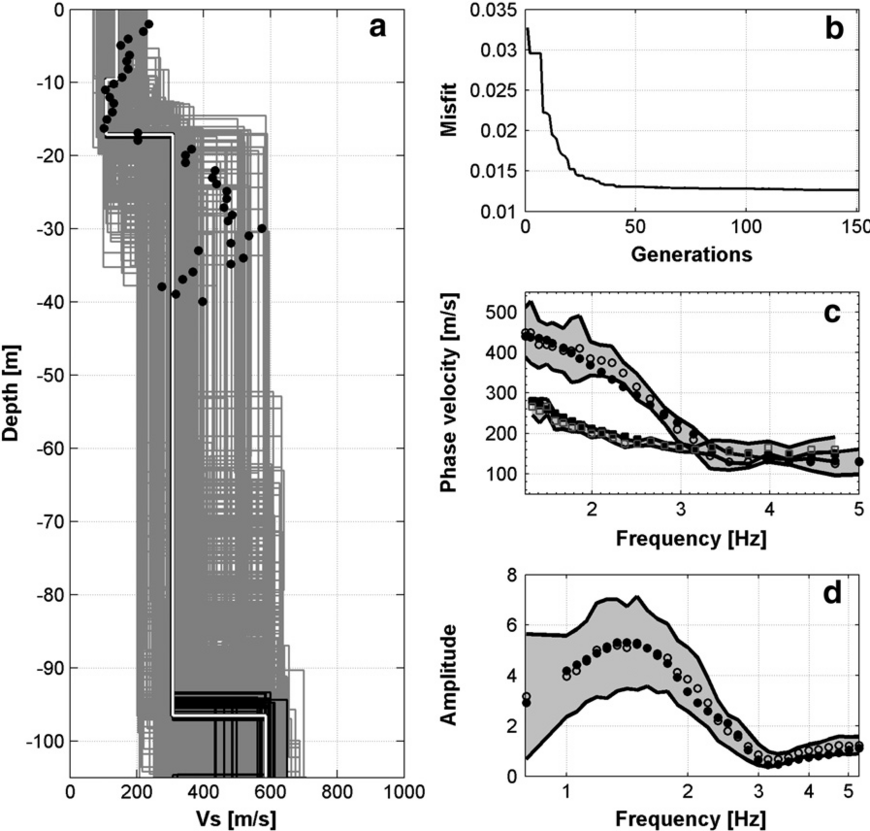back
Shallow geology characterization using Rayleigh and love wave dispersion curves derived by seismic noise array measurements.
Boxberger, T., Picozzi, M., Parolai, S. (2011)
The local geology and shallow S-wave velocity structure of a site are recognized to be key factors for the increase in the damaging potential of seismic waves. Indeed, seismic amplitudes may be amplified in frequency ranges unfavorable for building stock by the presence of soft sedimentary covers over lying hard bedrock. Hence, microzonation activities, which aim at assessing the site response as accurately as possible, have become a fundamental task for the seismic risk reduction of urbanized areas. Methods based on the measurement of seismic noise, which typically are fast, non-invasive, and low cost, have become a very attractive option in microzonation studies.
Using observations derived from seismic noise recordings collected by two-dimensional arrays of seismic stations, we present a novel joint inversion scheme for surface wave curves. In particular, the Love wave, the Rayleigh wave dispersion and the HVSR curves are innovatively combined in a joint inversion procedure carried out following a global search approach (i.e., the Genetic Algorithm).
The procedure is tested using a data set of seismic noise recordings collected at the Bevagna (Italy) test-site. The results of the novel inversion scheme are compared with the inversion scheme proposed by Parolai et al. (2005), where only Rayleigh wave dispersion and HVSR curves are used, and with a cross-hole survey.
a) S-wave velocity profile from the LRHV joint inversion; best fit model (white line), models in a range of the best fit model + 10% (black lines), all models (gray lines) b) misfit for all 150 generations c) observed (open circles) and calculated (black circles) Rayleigh wave dispersion curve, observed (gray squares) and calculated (black squares)Love wave dispersion curve, standard deviation values (gray lines) of the observed dispersion curve. d) observed (open circles) and calculated (black circles) H/V spectral ratio, standard deviation values (gray lines) of the observed H/V curve.

